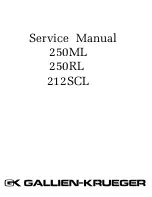
Please note that the maximum total amplitude of superposed A and B signals should stay
within ±10V range, otherwise clipping will occur.
The amplifier outputs high voltage signals at high frequency. It is, thus, imperative for the
safe operation that the user understands the possibilities and limitations of the
instrument. Isolated BNC output connector is used to comply with safety requirements.
INPUT AMPLITUDE
The amplitude of the input signal should normally be kept within ±10
V. The input
protection network limits the signal amplitude delivered to the power amplifier to a safe
value. It also effectively cuts accidental spikes and overshoots. However, large and/or
prolonged overvoltage at the input may blow the microfuse in the input protection circuit.
(A spare fuse is provided inside the instrument. If possible, contact flce@flce.se for advice
before opening the instrument case.)
Keep input signals within ±10
V range. Never connect the high voltage
output to the input of the instr ument!
TROUBLESHOOTING
Problem
Condi@on
Solu@on
No output
Power switch does not lit
Check the mains fuse
located on the back
No output or very small,
distorted signal
Power switch OK
Check the input microfuse
located inside the device.
Constant high voltage
output
Without any input signal
Amplifier failure.
Contact flce@flce.se
You should suspect a blown input microfuse if the output is about zero or the amplifier is
producing a very low voltage, distorted copy of the input signal (due to the capacitive
coupling through the blown fuse). Spare microfuses are provided inside the instrument.
They look like small metal cans and are placed in white holders. The resistance of a good
fuse is in the order of 46 ohm. It is imperative to disconnect the power cable and wait at
least a minute before opening the case. If possible, contact info@flce.se for advice.
ELECTRONICS AB
WWW.FLCE.SE


























